Shenzhen Port ( Chiness:深圳港 ) is a port in Shenzhen, Guangdong Province, China, located in the southern Pearl River Delta of Guangdong Province, close to Hong Kong.
In the 1980s, Shenzhen Port built bulk and general cargo berths and general terminal berths.
Shenzhen Port has 8 port areas including Shekou, Chiwan, Mawan, Dongjiaotou, Yantian, Fuyong Airport, Shayuyong and Inland River. The port water area is 106 square kilometers and the land area is 16 square kilometers.
As of October 2018, Shenzhen Port has opened a total of 239 international container liner routes, covering the world’s twelve largest shipping areas, and leading to more than 300 ports in more than 100 countries and regions.
In 2018, the cargo throughput of Shenzhen Port was 251 million tons.And handled 27.7 million TEU.
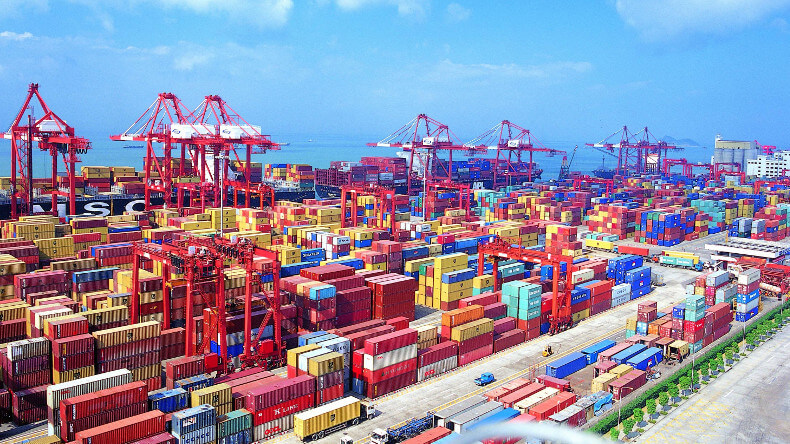
Construction history
In the 1980s, in order to meet the needs of the large-scale capital construction and economic growth of the Shenzhen Special Economic Zone, the Shenzhen Port built professional and general cargo berths and general terminal berths.
On June 2, 2000, the second-phase container terminal construction project of Yantian Port District, Shenzhen Port was completed.
In 2005, the Shenzhen Port Yantian Phase III Expansion and Dachan Bay Phase I Project started construction.
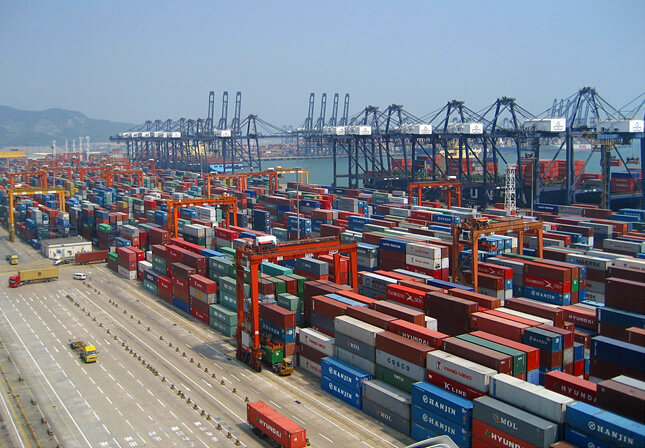
Yantian Port
On June 15, 1988, Yantian Port started construction. In December 1989, Yantian Port was completed and put into use.
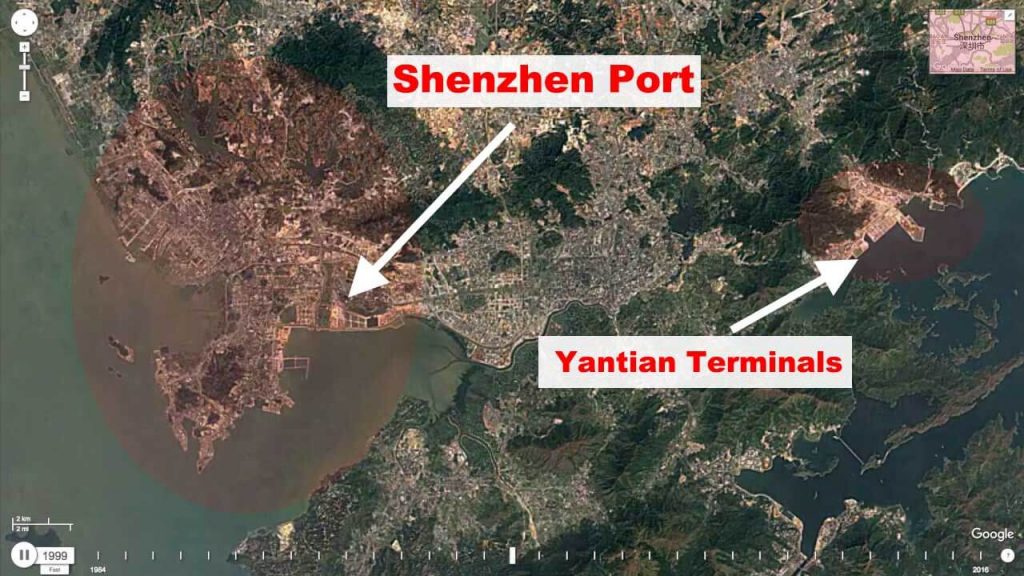
As of 2018, Yantian Port has 16 large-scale container deep-water berths, with a terminal area of 3.73 million square meters, 78 shore cranes, 222 gantry cranes, 14 to 17.6 meters of shore water depth, 17.6 meters of channel water depth, and a total length of berths of 7885 meters; Yantian Port is divided into It is the East, China and West Ports, of which China Port is divided into the first to third phases, and the West Port is divided into the first to second phases. The East Port has not yet been constructed.
In 2008, Yantian Port had more than 100 weekly routes, of which Europe and America routes accounted for 60%;
In 2010, Yantian Port achieved a container throughput of 10.134 million TEUs throughout the year;
On January 8, 2013, Yantian International Container Terminal ushered in the birth of the first 100 million TEUs.
Hardware facilities
Channel berth
At the end of 2003, Shenzhen Port built a total of 136 berths above 500 tons, of which 47 berths above 10,000 tons
86 operating berths, including 39 operating berths above 10,000 tons;
14 special berths for containers;
There are 9 berths at the cargo terminal, including 3 berths above 10,000 tons; 18 passenger ferry berths
23 non-productive berths.
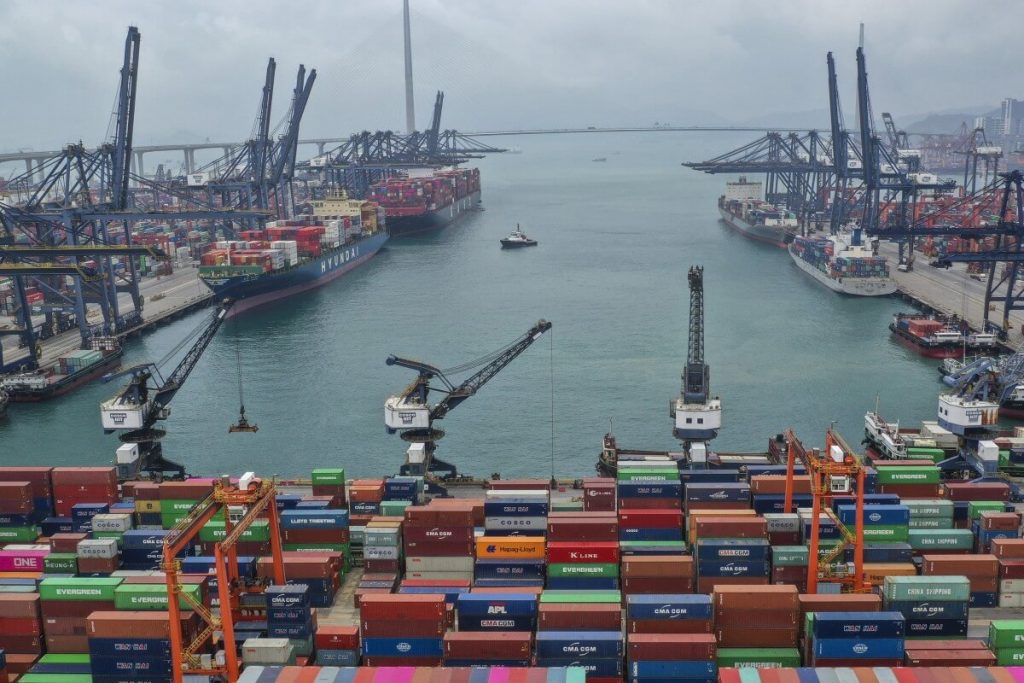
In 2015, Shenzhen Port had 159 berths of various types, of which 67 were above 10,000 tons and 46 were dedicated container berths. Shenzhen Port achieved 175,000 tons of container ship berthing without approval.
As of October 2018, Shenzhen Port has eight container berths with a berthing capacity of 200,000 tons. 80% of container ships with more than 10,000 TEUs are berthed in Shenzhen Port, of which 18,000 TEUs are very large The ship is 100% anchored.
Handling facilities
In 2015, Shenzhen Port had 421 LNG trailers in operation in the port area. Six LNG skid-mounted gas stations have been built, of which five have been put into use. The western port area uses electric vehicles instead of diesel patrol vehicles, and the circulation buses in the port area use LNG buses instead of diesel buses.
In 2015, Yantian International Terminal had 74 shore cranes, including 51 ultra-Panama shore cranes, serving 16 deep-water berths. On average, approximately 5 shore cranes can be arranged for each berth, and three 18,000 TEU super-large ships can be realized simultaneously Anchorage and loading and unloading.
As of July 2018, the Shenzhen Port Container Terminal loading and unloading bridge and the yard gantry cranes have all completed the “oil to power” transformation; a total of 14 sets of shore power facilities covering 25 large berths have been built, and a total of 141 shore power facilities have been connected It received 8345.5 hours of electricity and used 3.2 million kWh of electricity.
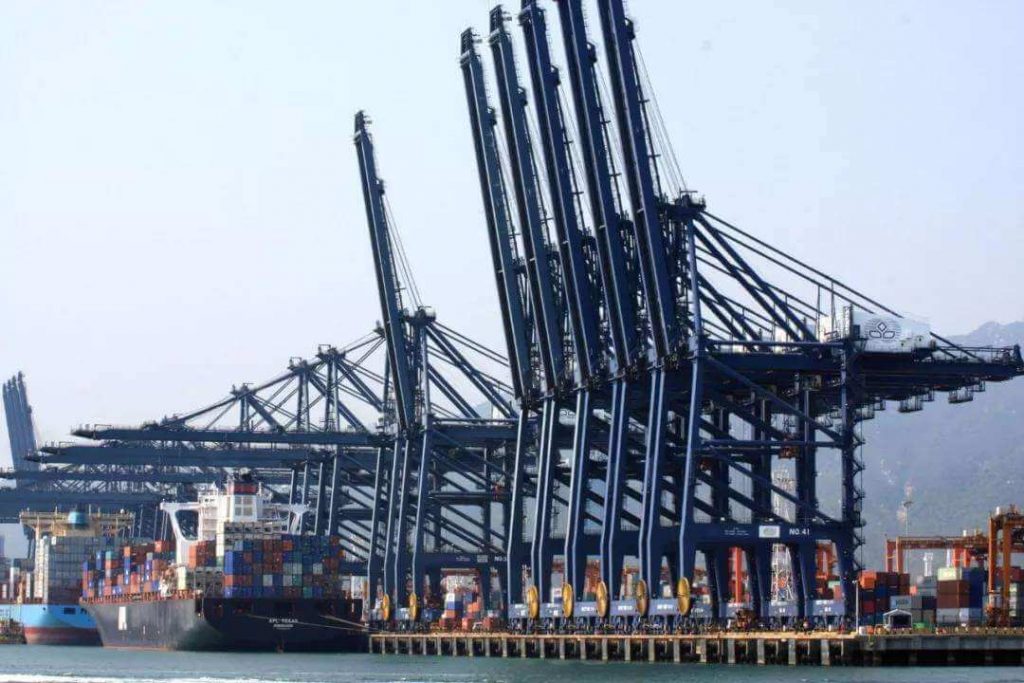
operation status
Main business
Shenzhen Port’s cargo is mainly containers, and it also runs chemical fertilizers, grain, feed, sugar, steel, cement, wood, sand, petroleum, coal, ore, etc.
Flight route
At the end of 2014, there were 235 international container liner routes calling at Shenzhen Port, leading to more than 300 ports in more than 100 countries and regions.
There are 47 coastal feeder routes and foreign trade barge routes, of which the South China Express barge service network covers 49 terminals in the Pan-Pearl River Delta. The volume of barge transport containers completed in 2014 was 3.7 million TEUs, a year-on-year increase of 53%. There are 15 lines of sea-rail combined transport, and the volume of sea-rail combined transport is 172,100 TEUs, an increase of 9.53% year-on-year.
At the end of June 2016, Shenzhen Port had a total of 248 international liner routes.
Among them, there are 34 North American routes, 9 South American routes, 38 European routes, 11 Mediterranean routes, 118 Asian routes, 18 Middle Eastern routes, 3 Red Sea routes, 8 Australian routes, and 9 African routes.
As of 2018, Shenzhen Port has opened a total of 239 international container liner routes, covering the world’s twelve largest shipping areas, and leading to more than 300 ports in more than 100 countries and regions; Shenzhen Port has established 18 Lu Wushui Port signed a combined port agreement, opened 60 barge routes (including Hong Kong) covering 52 Pearl River Delta feeder terminals (including Hong Kong) and 14 sea-rail intermodal routes, and listed 4 inland ports.
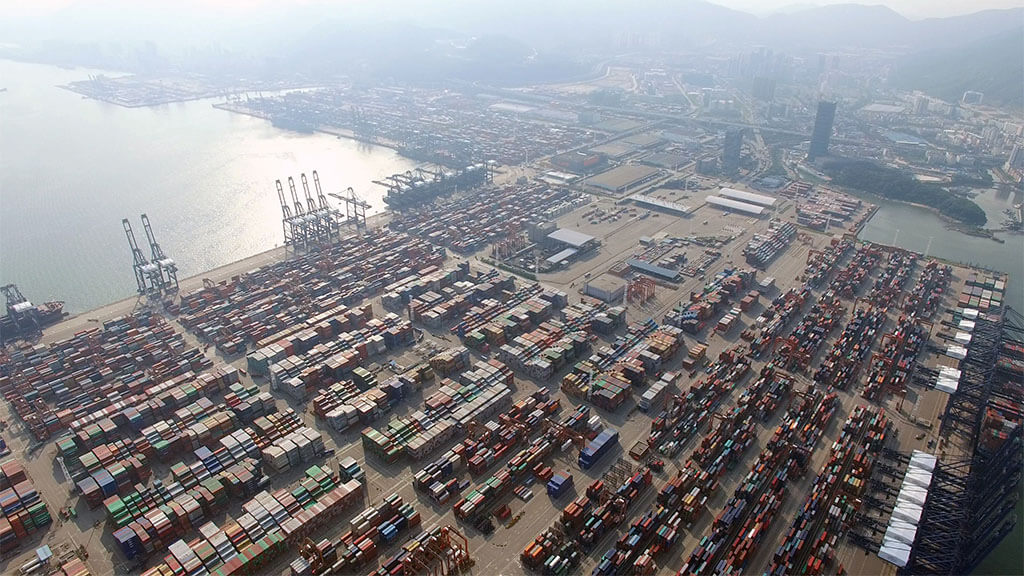
Passenger and freight traffic
In 2003, the cargo throughput of Shenzhen Port was 11.22 million tons, and the container throughput reached 10.65 million TEUs.
In 2014, the cargo throughput of Shenzhen Port reached 223 million tons, of which the foreign trade cargo throughput was 184 million tons, an increase of 1.21% year-on-year. The annual container throughput of Shenzhen Port was 24.367 million TEUs, a year-on-year increase of 3.26%.
In 2017, Shenzhen Port completed a cargo throughput of 241 million tons, an increase of 12.73% year-on-year; container throughput was 25.208 million TEUs, an increase of 5.13% year-on-year.
In 2017, Shenzhen Port completed a transportation throughput of 4.633 million TEUs for container barges, an increase of 9.16% year-on-year; and completed an international transfer throughput of 4.552 million TEUs, an increase of 2.08% year-on-year.
In 2018, the cargo throughput of Shenzhen Port was 251 million tons, an increase of 4.1% year-on-year, with an average daily output of 688,400 tons, of which the foreign trade cargo throughput was 187 million tons, a slight decrease of 0.26%; the domestic trade cargo throughput was 63.987 million tons, an increase of 19.41 %;
Container throughput was 25.739 million TEUs, a year-on-year increase of 2.09%, with an average daily average of 70,500 TEUs, of which foreign trade container throughput was 24,162,100 TEUs, an increase of 2.49% year-on-year, and domestic trade container throughput was 1,573,800 TEUs, a year-on-year decrease of 3.67%.
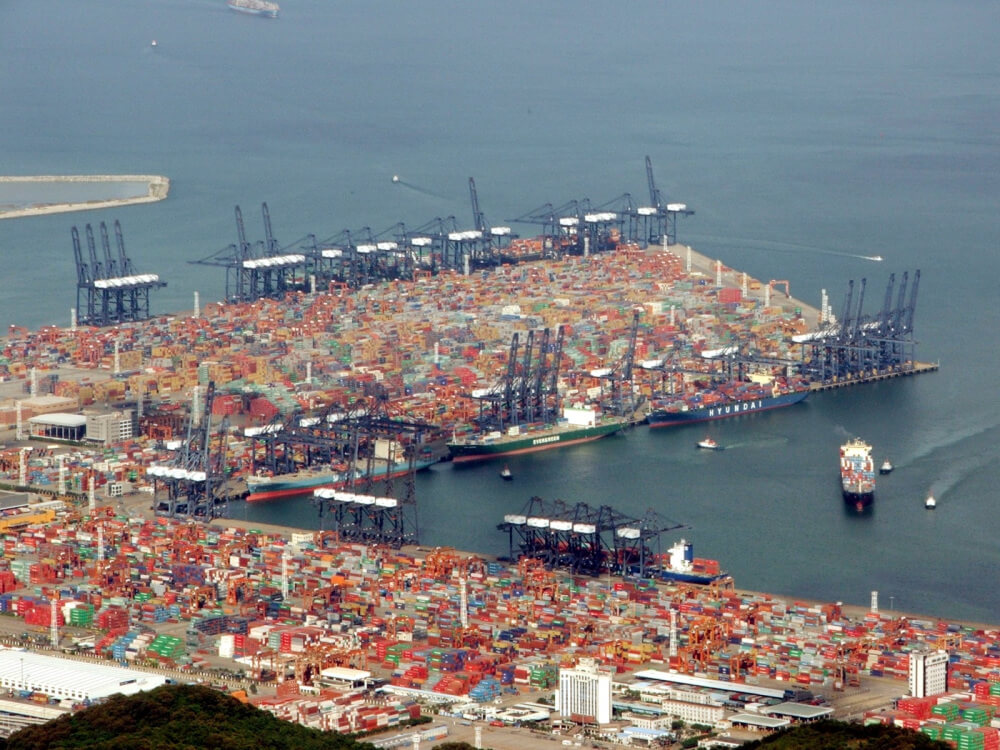
Shenzhen Port Data
- Country
- China
- Location
- Pearl River Delta, Shenzhen, Guangdong
- Official name
- 深圳港
- Status
- In use
- Port type
- Deepwater seaport
- Features
- Natural port, Artificial port
- Region
- East Asia
- Sea area
- South China Sea
- Water area
- 106 square km (2005)
- Annual container volume
- 27.7 million TEU (2018)
- Annual container volume
- 251 million tons (2018)
View Shenzhen Port on Google Satellite Map
Google satellite maps allow you to see building details more clearly, including natural landscapes such as mountains, rivers, deserts, sea and man-made engineering buildings.
If you are very interested in this engineering building, it is a good idea to click below Google Map icon. We will help you jump to the corresponding location of this building or engineering on Google satellite map.





























































